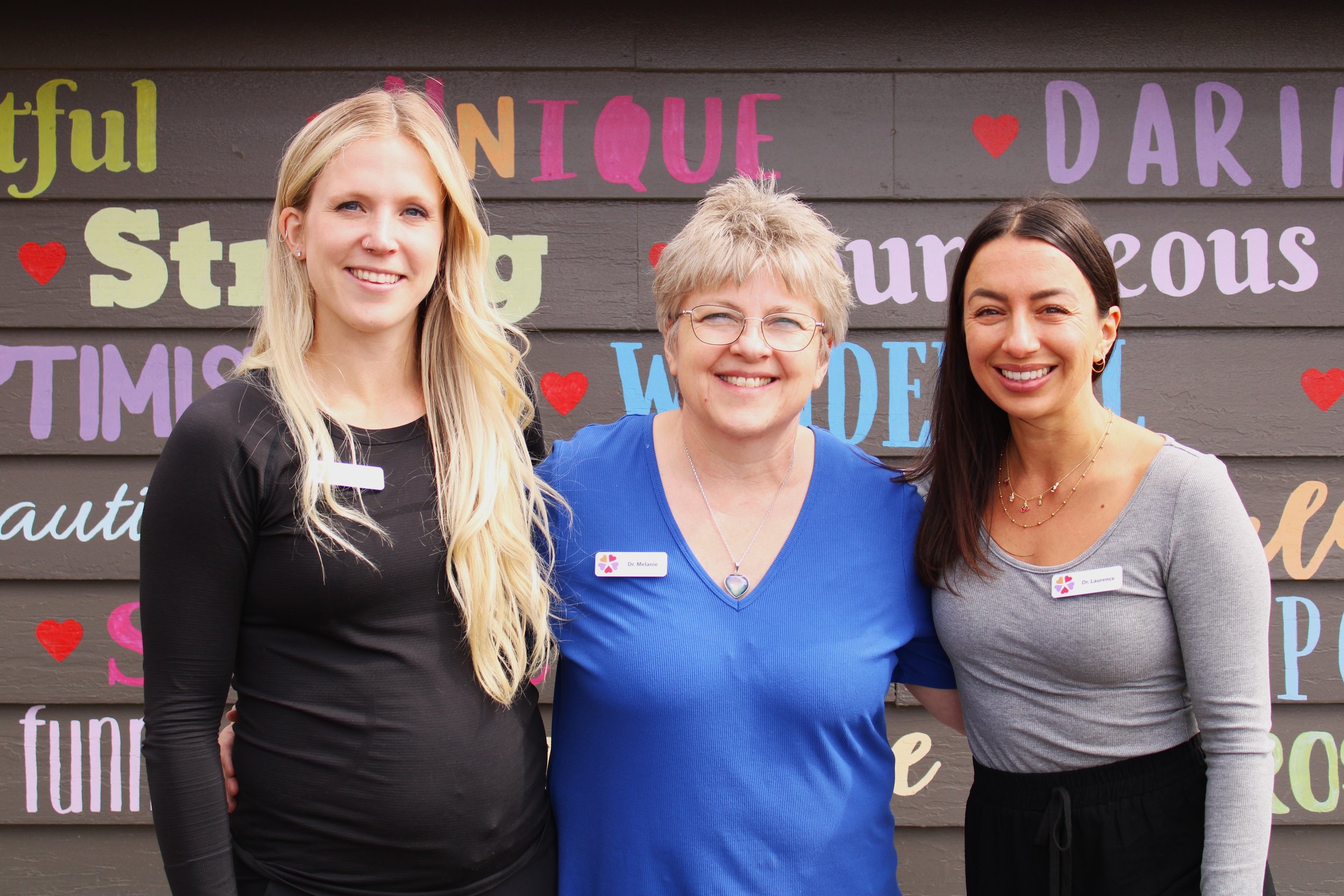
Do You have Retained Primitive Reflexes?
Let’s find out!
Please Click Here to be directed to our online form
Once your form is finished, it will be emailed to us. We will have a chance to look at it before your next appointment to save us all time.
Please note: if we don’t receive your form before your appointment, we will have to reschedule it.
Thank you for your understanding and see you soon!
Dr. Melanie, Dr. Laurence, Dr. Leah
And while you’re waiting for your appointment,
here is a bit more about Primitive Reflexes!
The information presented on this webpage is printed with permission from Harkla.co

Primitive Reflexes….
At birth, primitive reflexes are present to assist in survival - many develop in utero. These involuntary movement patterns are designed to keep the newborn alive and help with development throughout infancy.
They are "automatic, stereotyped movements, directed from the brain stem and executed without cortical involvement." (Goddard)
The kicker here is that these primitive reflexes do not stay forever; they should integrate - or mature.
Some primitive reflexes integrate before the first year, while some integrate as late as 3 years.
When a primitive reflex integrates, it makes way for new, more mature and intentional movement patterns, and higher-level learning to develop.
How do primitive reflexes naturally integrate?
Primitive reflexes are not meant to remain in the body forever. Once they integrate, more mature and voluntary movements appear.
Primitive reflexes are meant to integrate naturally - through movement, or what we call "developmental milestones."
Developing head control, tummy time, rolling, crawling, etc. - these are all examples of natural movements that will assist in natural primitive reflex integration.
When you look closely, you can often seen primitive reflexes integrate as new developmental milestones are reached!
What if primitive reflexes do not integrate?
Each primitive reflex comes with its own set of movements and leads to new and different developmental milestones.
If a specific reflex is retained, it may affect a specific area of development.
Additionally, many reflexes are directly related to one another. Therefore, if one reflex is retained, we can assume that others may also be retained.
If a primitive reflex does not integrate naturally, this is an indication of structural weakness or immaturity within the CNS (central nervous system).
Instead of mature, voluntary movement patterns, a child with retained primitive reflexes may develop abnormal movement patterns which can result in clumsiness. This can affect a child's ability to participate in daily activities.
Retained Primitive Reflexes affect EVERYTHING
〰️
Retained Primitive Reflexes affect EVERYTHING 〰️
When children retain Primitive Reflexes, they will often struggle with:
-

Social Skills
-

Coordination for playing games or sports
-

Emotional Regulation
-

Problem Solving
-

Focusing in Class
-

Ants in Their Pants
-

Reading and writing
-

Anxiety
What causes a Primitive Reflex to NOT integrate?
-

During Pregnancy
Hyperemesis or severe morning sickness
Severe viral infection during the first 12weeks or between 26-30 weeks
Alcohol / drug use / medications/smoking
Severe stress or trauma, especially during weeks 25-27
Stroke in utero
Conceived as a result of IVF
-

During Birth
Premature birth
Prolonged or fast labor
Assisted delivery, i.e. use of force vacuum extraction
Trauma during birth
Induced labor
Caesarean section delivery
Cord wrapped around infant's neck; fetal distress
-

After Birth
Prolonged jaundice
Torticollis
Developmental motor delays
Minimal floor time as an infant
Low birth weight
Excessive use of containers during infancy
-

Infancy - Toddlerhood
Problems with feeding within the first 6 months of life
Tongue / lip tie
Cerebral Palsy or other physical disability
Down Syndrome or other intellectual disability
Severe traumatic event
Traumatic brain injury (TBI)
Epilepsy
Autism
This is not an exhaustive list, but simply some potential factors that have been identified in correlation with retained primitive reflexes.
These factors, however, are not a guarantee that a child’s primitive reflexes will be retained
How do I know if my child has Retained Primitive Reflexes?
(or maybe if I have one, or two as well???!)
Here are some common behaviours of people who have Retained Primitive Reflexes:
motion sickness
anxiety/nervousness
mood swings
frequent headaches
fatigues easily
presents with ADD/ADHD tendencies
poor social skills
poor balance
poor muscle tone
poor posture (seated/standing)
fear of heights
abnormal gait
fidgeting
decreased concentration
bed wetting beyond age 5
irritated by clothing on waist
frequent middle ear infections
IBS over the age of 4 years
poor handwriting
right/left confusion
mixes b's and d's during writing
did not crawl/skipped crawling as a baby
struggled with rolling in infancy
lays head on desk while writing
biting fingernails
thumb sucking beyond 1.5 years old
tightening of jaw with clenched fists
eats with hands rather than utensils
extreme picky eating
messy eater
difficulty chewing/swallowing
tethered oral tissues
reading difficulties
ants-in-the-pants
challenges calming down
poor impulse control
How We Can Help
Both children AND adults can have Retained Primitive Reflexes
Dr. Melanie, Dr. Laurence and Dr. Leah have taken extra courses and seminars to learn how to assess and treat people with retained primitive reflexes
We will have you fill out a comprehensive intake form that will help us to focus on which reflexes might be retained
We will do a thorough chiropractic and neurological exam
We will make an individualized plan for you and/or your child that will include chiropractic adjustments and home exercises
These home exercises must be done twice a day for at least 30 days for your nervous system to integrate the retained primitive reflexesThen we will re-exam to assess and plan again
If you would like more information, or to
make an appointment with one of our Doctors,
please call us at 403-945-2422
The information presented on this webpage was created by
Rachel Harrington and Jessica Hill, both occupational therapists at Harkla
We have been given permission by them to post this information
on our website and to give their handouts to our patients





